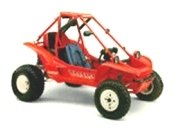
PilotOdyssey.com

 |
PilotOdyssey.com |
|
| It is currently Mon May 19, 2025 1:16 pm |
|
All times are UTC - 5 hours [ DST ] |
 
|
Page 1 of 2 |
[ 26 posts ] | Go to page 1, 2 Next |
|
| Author | Message | |||
|---|---|---|---|---|
| stix |
|
|||
|
Joined: Mon Oct 08, 2007 12:39 am Posts: 3295 Location: Oklahoma City, OK |
|
|||
| Top | |
|||
| afastcar |
|
|||
|
Joined: Thu Jun 16, 2005 7:19 pm Posts: 2245 Location: Chandler, AZ |
|
|||
| Top | |
|||
| stix |
|
|||
|
Joined: Mon Oct 08, 2007 12:39 am Posts: 3295 Location: Oklahoma City, OK |
|
|||
| Top | |
|||
| adnoh |
|
||||||
|
Joined: Fri Jan 12, 2007 2:17 pm Posts: 3636 Location: Wichita ks |
|
||||||
| Top | |
||||||
| mudbogger |
|
|||
|
Joined: Tue Dec 23, 2003 10:31 pm Posts: 5559 Location: New Jersey |
|
|||
| Top | |
|||
| adnoh |
|
|||
|
Joined: Fri Jan 12, 2007 2:17 pm Posts: 3636 Location: Wichita ks |
|
|||
| Top | |
|||
| halorising |
|
|||
|
Joined: Sun Jan 29, 2012 9:54 pm Posts: 835 Location: corona |
|
|||
| Top | |
|||
| Dave-Co |
|
|||
|
Joined: Mon Jan 16, 2012 8:56 pm Posts: 550 |
|
|||
| Top | |
|||
| adnoh |
|
|||
|
Joined: Fri Jan 12, 2007 2:17 pm Posts: 3636 Location: Wichita ks |
|
|||
| Top | |
|||
| adnoh |
|
|||
|
Joined: Fri Jan 12, 2007 2:17 pm Posts: 3636 Location: Wichita ks |
|
|||
| Top | |
|||
| FL670R |
|
|||
|
Joined: Sun Dec 21, 2003 11:30 pm Posts: 539 Location: Nebraska |
|
|||
| Top | |
|||
| adnoh |
|
|||
|
Joined: Fri Jan 12, 2007 2:17 pm Posts: 3636 Location: Wichita ks |
|
|||
| Top | |
|||
| adnoh |
|
|||
|
Joined: Fri Jan 12, 2007 2:17 pm Posts: 3636 Location: Wichita ks |
|
|||
| Top | |
|||
| adnoh |
|
|||
|
Joined: Fri Jan 12, 2007 2:17 pm Posts: 3636 Location: Wichita ks |
|
|||
| Top | |
|||
| halorising |
|
|||
|
Joined: Sun Jan 29, 2012 9:54 pm Posts: 835 Location: corona |
|
|||
| Top | |
|||
| nickRNR |
|
|||
|
Joined: Thu Oct 30, 2008 8:22 pm Posts: 2641 Location: Rancho Cucamonga, Ca |
|
|||
| Top | |
|||
| halorising |
|
|||
|
Joined: Sun Jan 29, 2012 9:54 pm Posts: 835 Location: corona |
|
|||
| Top | |
|||
| Dave-Co |
|
|||
|
Joined: Mon Jan 16, 2012 8:56 pm Posts: 550 |
|
|||
| Top | |
|||
| adnoh |
|
|||
|
Joined: Fri Jan 12, 2007 2:17 pm Posts: 3636 Location: Wichita ks |
|
|||
| Top | |
|||
| Lee |
|
|||
|
Joined: Mon Dec 22, 2003 9:04 am Posts: 465 Location: Springfield Ohio |
|
|||
| Top | |
|||
| adnoh |
|
|||||||||
|
Joined: Fri Jan 12, 2007 2:17 pm Posts: 3636 Location: Wichita ks |
|
|||||||||
| Top | |
|||||||||
| adnoh |
|
||||||||
|
Joined: Fri Jan 12, 2007 2:17 pm Posts: 3636 Location: Wichita ks |
|
||||||||
| Top | |
||||||||
| hoser |
|
|||
|
Joined: Mon Dec 15, 2003 2:40 pm Posts: 22617 Location: Chicago |
|
|||
| Top | |
|||
| stix |
|
|||||
|
Joined: Mon Oct 08, 2007 12:39 am Posts: 3295 Location: Oklahoma City, OK |
|
|||||
| Top | |
|||||
| hoser |
|
|||
|
Joined: Mon Dec 15, 2003 2:40 pm Posts: 22617 Location: Chicago |
|
|||
| Top | |
|||
 
|
Page 1 of 2 |
[ 26 posts ] | Go to page 1, 2 Next |
|
All times are UTC - 5 hours [ DST ] |
Who is online |
Registered users: Bing [Bot], eseymour72, Google [Bot], Lanix |
| You cannot post new topics in this forum You cannot reply to topics in this forum You cannot edit your posts in this forum You cannot delete your posts in this forum You cannot post attachments in this forum |